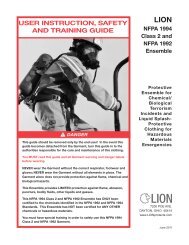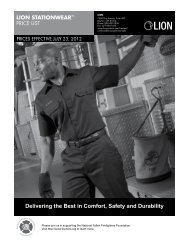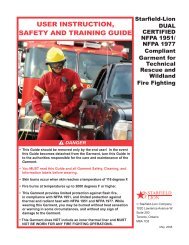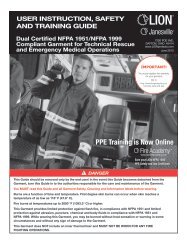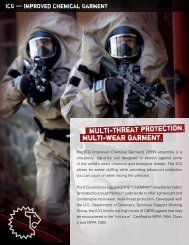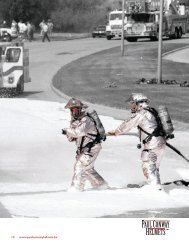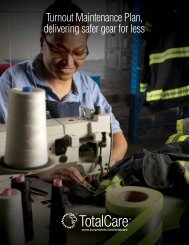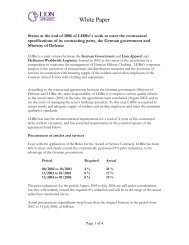Create successful ePaper yourself
Turn your PDF publications into a flip-book with our unique Google optimized e-Paper software.
10.3 HEART ATTACKS: A RESULT OF OVEREXERTION<br />
Certain activities that may be undertaken during Hazardous Materials<br />
operations will cause the heart to beat faster because of the need to move<br />
more blood to the working muscles. This blood carries more oxygen to the<br />
muscles so they can handle the increased workload.<br />
Another factor in increasing the rate of the heart is the presence of<br />
adrenaline, the fight or flight hormone, in the body during an emergency. The<br />
adrenaline present in your system causes the heart to pump even faster than<br />
during normal activity.<br />
All of these factors could place too much stress on the heart, leading to a<br />
heart attack. The heart simply cannot handle the load placed on it.<br />
! WARNING<br />
You must be physically fit to safely perform strenuous work under stressful<br />
conditions. Regular cardiovascular exercise, abstaining from cigarette smoking,<br />
proper training, a healthy diet, and avoidance of obesity, can help to reduce the<br />
risk of a heart attack.<br />
! WARNING<br />
Due to the fact that this Garment is not moisture vapor breathable, appropriate<br />
safety measures including monitoring of vital signs, duration of work, limiting the<br />
duration of work, and using proper rehab procedures post incident.<br />
10.4 ELECTROCUTION<br />
WARNING<br />
!<br />
Your Ensemble is NOT designed to protect you against electrocution. When<br />
entering a building, you should NEVER touch live wiring, especially if your<br />
Ensemble is wet. Never allow equipment you are operating to contact live wiring.<br />
10.5 BLOODBORNE PATHOGENS<br />
Your Ensemble is designed to protect your body from the hazards of<br />
exposure to bloodborne pathogens present in human body fluids. Exposure<br />
incidents are specific contact of the following with blood or O.P.I.M. (Other<br />
Potentially Infectious Materials): eye; mouth or other mucous membranes;<br />
non-intact skin; or parenteral contact. Make sure face and mouth, eyes<br />
and nose, and non-intact skin are covered. Avoid contact with sharps.<br />
Use Body Substance Isolation Procedures when handling your ensemble<br />
if contaminated with body fluids. Cleaning your Ensemble will eliminate all<br />
hazards arising from its exposure to potentially hazardous body fluids.<br />
21



